
© The Mikhailovsky Theatre. (Click image for larger version)
Mikhailovsky Ballet
Laurencia – Osipova / Vasiliev
London, Coliseum
2 April 2013
www.mikhailovsky.ru
Danced like this, Laurencia proves that Mikhail Messerer was right to restage Vakhtang Chabukiani’s 1939 ballet in celebration of the centenary of the choreographer’s birth. When the Mikhailovsky Ballet first brought this production to London in 2010, Laurencia seemed a creakily old-fashioned Soviet drambalet. Now, with Natalia Osipova and Ivan Vasiliev as the leads, it sparkles with fun, melodrama and commitment – not least from the company’s orchestra, conducted by Valery Ovsyanikov.
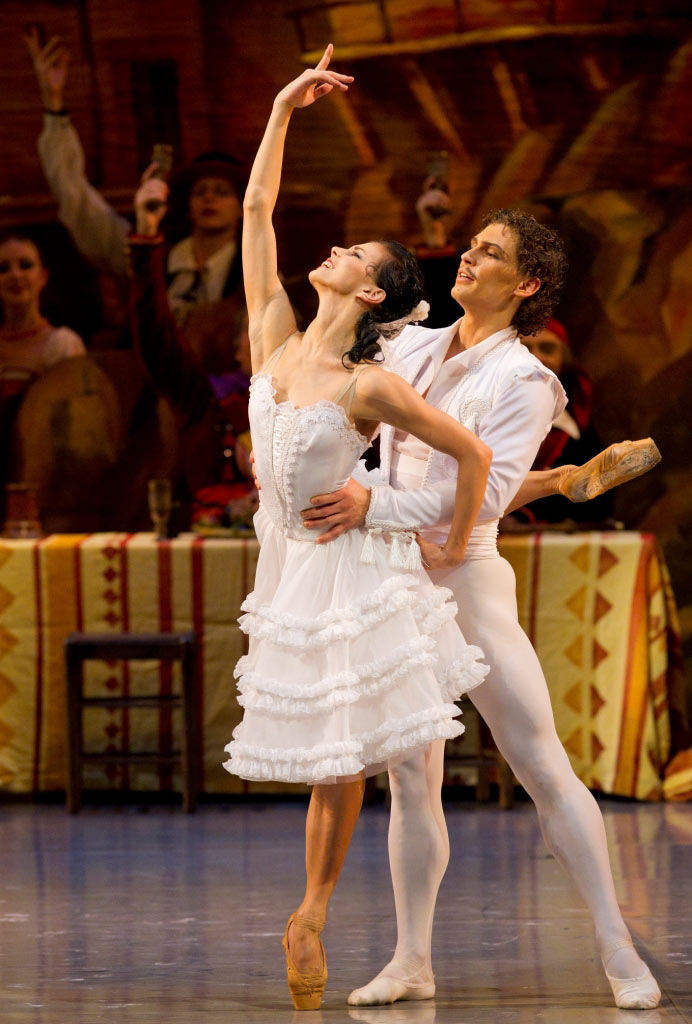
© The Mikhailovsky Theatre. (Click image for larger version)
Alexander Krein’s rousing music tries to sound somewhat Spanish (unlike Minkus for Don Quixote) since the ballet is based on Lope de Vega’s 1619 play Fuente Ovejuna. The score valiantly supports the action, in which the people of the Castillean village of Fuentovejuna, led by peasant girl Laurencia, rise up against a cruel commander and kill him. The anti-tyranny theme was in tune with the times – the Spanish civil war and the imminent threat of the Nazi invasion of Russia.
The ballet’s collaborators – Chabukiani, Krein and the designer, Simon Virsiladze – were also bound to observe the diktats of Soviet cultural policy under Stalin. Ballet for the people was required to be dramatically plausible, not frivolous or formalistic; it should be inspired by the way people moved in folk dances rather than by courtly behaviour. Ideally, the narrative element should reflect socialist realism (life on a collective farm or factory) but failing that, be drawn from serious literature, preferably with a revolutionary theme. Fuente Ovejuna fitted the bill, as had Vasily Vainonen’s ballet, The Flames of Paris, in 1932.
These two, along with Zakharov’s The Fountain of Bakhchisarai and Lavrovsky’s Romeo and Juliet, were among the few drambalets to survive before the advent of Yuri Grigorovich’s blockbusters in the 1960s. Dutiful works featuring contemporary Soviet life tended to sink into oblivion. Laurencia had the advantage of good tunes and lots of virtuoso dancing, showcasing the full-blooded talents of Chabukiani himself and of Natalia Dudinskaya as his leading lady – and challenging dancers ever since (including the Trocks).
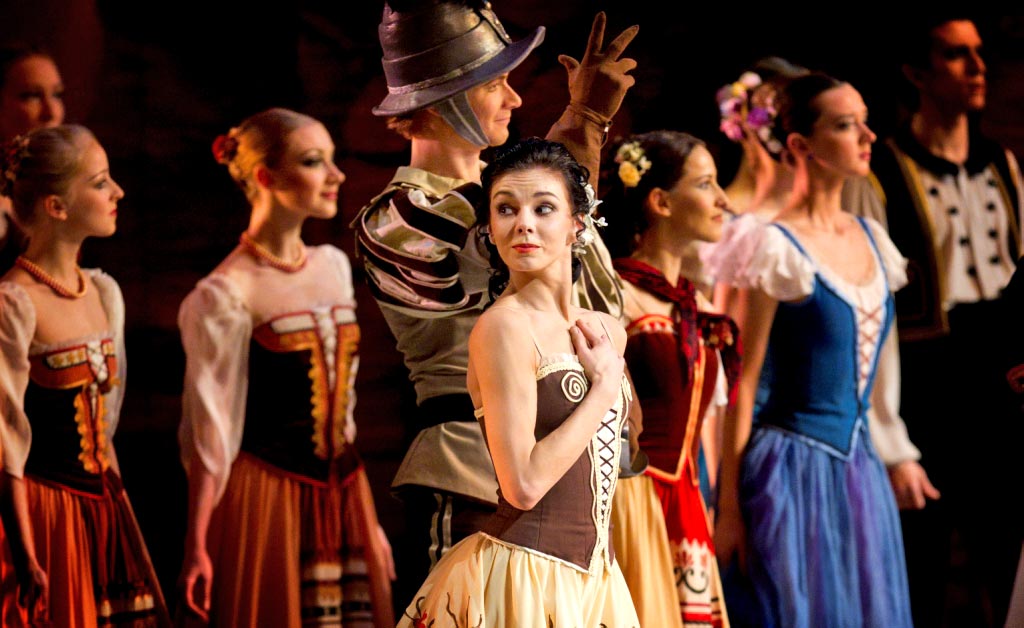
© The Mikhailovsky Theatre. (Click image for larger version)
Messerer’s production pays homage to Chabukiani, with a projection of an original Russian poster for Laurencia and a glimpse on film of the virile dancer in action. The story speeds along, pausing for Spanish-tinged ensemble numbers for the corps in each of the two acts; on-stage castanets are amplified by those in the orchestra pit. The heroine’s two best girlfriends, Pascuala (Sabina Yapparova) and Jacinta (Oksana Bondareva), are able to shine in their variations. The choreography is basically classical ballet with deep backbends and curlicue arms, as in the famous pas de six in Act II, which Nureyev taught to the Royal Ballet in the 1960s.
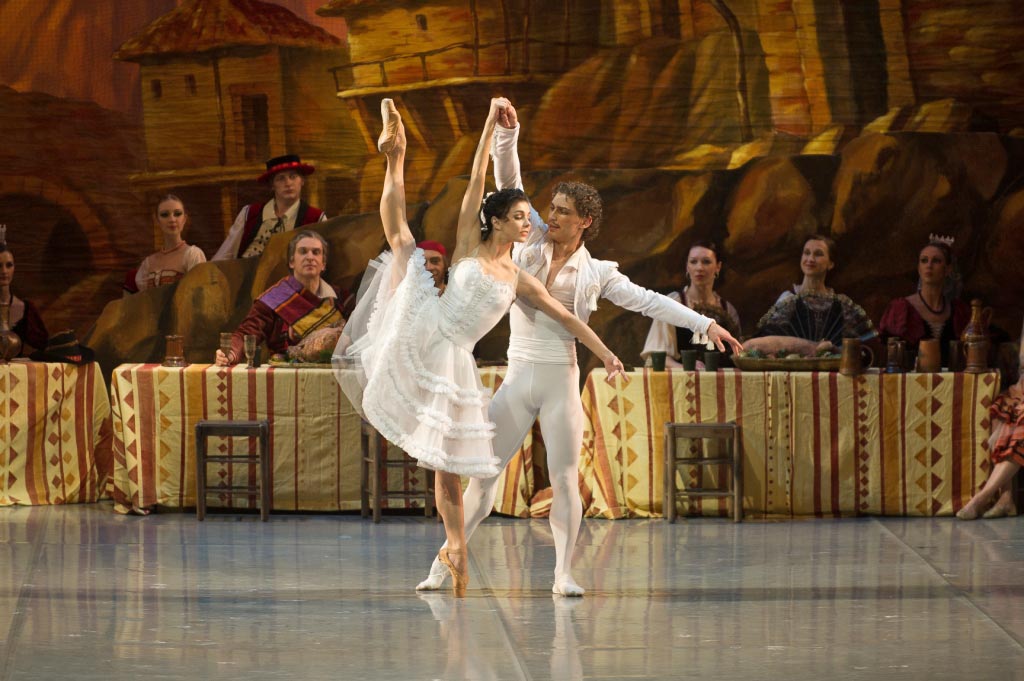
© The Mikhailovsky Theatre. (Click image for larger version)
Enjoyable though the home team’s dancing is, they are outdone by the blazing wattage of Osipova and Vasiliev. Both connect with the audience, dancing for the highest reaches of the theatre as well as for the cast on stage. They stay in character while communicating their exhilaration in being able to bring off technical feats with enviable nonchalance. Vasiliev hangs in the air, leaving space between his cabriole double beats, and winds his multiple spins into a calmly controlled finish. Osipova concludes her dazzling fouettés and chaîné turns as if they’d been a mere nothing. When she hurls herself into arabesques urging the women of the village (the men being wimps) to avenge the wrongs done by the evil Commander, they have no hesitation in following her lead. To hell with the consequences.

© The Mikhailovsky Theatre. (Click image for larger version)
The Commander, Don Fernan (Mikahil Venshchikov), is a pantomime villain. Callously, he hands over Jacinta to his soldiers to be raped and seizes Laurencia for himself. He imprisons her lover, Frondoso, for daring to defy him. So he deserves to be lynched in the final scene, his head impaled on a stake. The ballet ends in wild rejoicing as the curtain falls. What isn’t revealed is that the villagers escape retribution. In the play, based on an historical uprising, they stick together so no-one can be executed, telling the authorities ‘Fuenteovejuna did it’. The people triumph – and Laurencia and Frondoso live happily ever after. Chabukiani’s ballet satisfied the Soviets, as it does audiences today when it’s performed with all-out conviction.













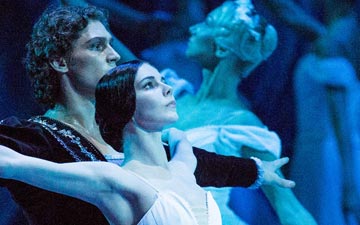

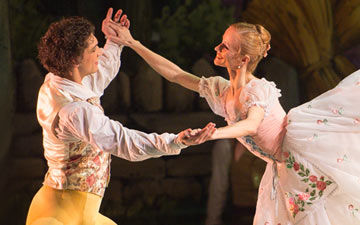

You must be logged in to post a comment.